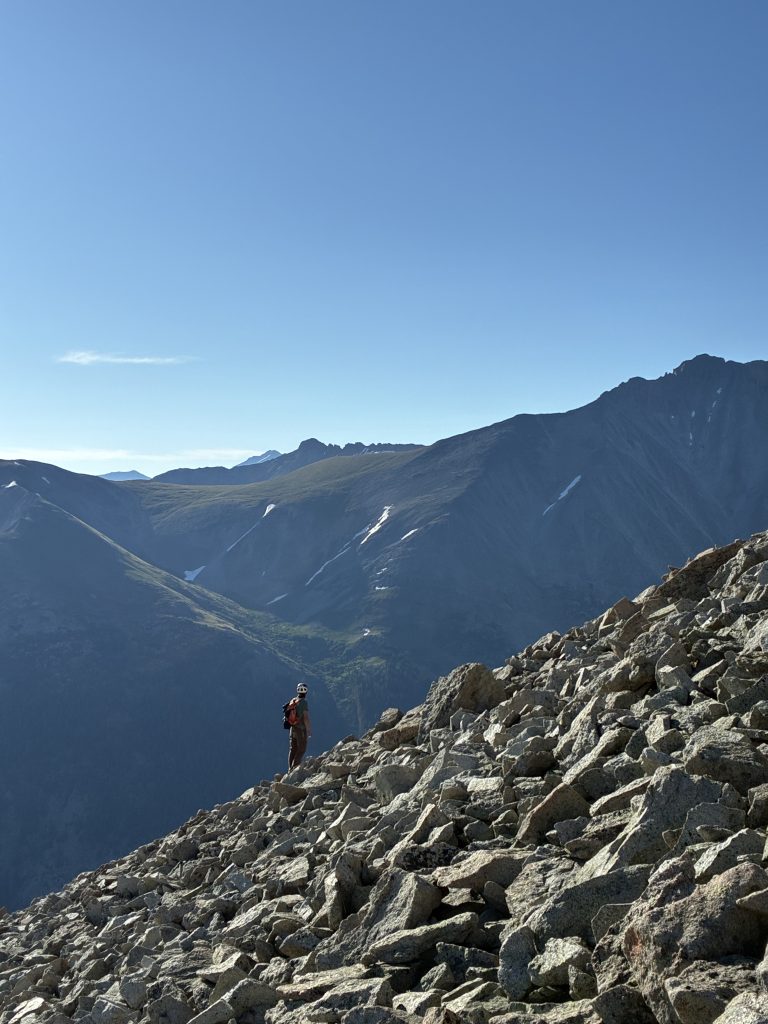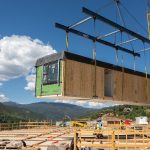Aspen Mountain Rescue incident responses increase this summer

Beau Toepfer/The Aspen Times
Mountain Rescue Aspen has been “busy” on Colorado’s technical high peaks this summer, with five more incident responses so far this season compared to the same June- mid-July period of last summer.
There have also been six hoist rescues in the Aspen area since the beginning of the year, according to Jordan White, the president of Mountain Rescue Aspen.
Compared to 13 search and rescue responses in both 2023 and 2024, this summer has seen 18 search-and-rescue responses in Pitkin County in the June to mid-July period, according to the Pitkin County Sheriff’s Office. From 2023 to 2024, the number of search-and-rescue responses during the extended season of June through the end of October increased from 39 in 2023 to 53 in 2024.
According to Scott Messina, Aspen Mountain Rescue’s Rescue leader coordinator, the number of calls to service in 2024 was almost 50 more than average, totalling 127 calls versus the annual average of 77.
Helicopters have been used more this season because of the number of rescues that would have spanned multiple operational periods, or multiple days, if a helicopter wasn’t used to extricate an individual, White explained. These rescues generally take place on the more technical 14ers in the region, like Capitol Peak, Snowmass Peak, the Maroon Bells, and Pyramid Peak.
According to Parker Lathrop, chief deputy of operations for the Pitkin County Sheriff’s Office, the way helicopters are implemented in rescues have changed in recent years — in the past, helicopters would drop rescuers off in a safe landing site closer to the patient’s location, so rescuers would have less of an approach to get out and back with the patient. Rescuers would also often use long-line rescues, where the search-and-rescue professional would be attached to a rope under the helicopter and flown in dangling from the line.
The recent addition of hoist systems and the training programs for SAR professionals have made it possible to remove some of the danger and complications of long-line rescues.
“The addition of hoisting a few a number of years ago made helicopters a lot more capable, as well,” Lathrop said. “Because with a hoist team … the helicopter lowers the person from inside the aircraft.”
Requesting a helicopter can be a complicated task and requires more personnel on the operation side. According to Anna DeBattiste, the public information officer for Colorado Search and Rescue, a helicopter’s involvement requires CSAR coordinators to help manage resources that local SAR teams can’t get in their own county, such as dog teams or even the helicopter itself. Those coordinators have to be on call 24/7 and have to have a strong understanding of what resources are appropriate for what missions.
“Only the National Guard ultimately makes the decision as to whether to fly that mission or not,” DeBattiste said.
While helicopters are rarely the first resource called on by search-and-rescue teams, they are considered when the patient’s life, limb, or eyesight are at risk or when rescuer safety is at risk.
But Lathrop noted that the type of responses can vary from talking to someone over the phone and checking on their condition all the way to large search operations or fatalities.
Start Your Day with the Sunrise Rundown
Get the top headlines, local updates, and need-to-know news delivered to your inbox every weekday morning. Join thousands of readers who start their day informed—with the Sunrise Rundown from The Aspen Times.
Sign up for the Sunrise Rundown at AspenTimes.com/newsletter
“We had two gentlemen who got cliffed out coming down Capitol (peak) a few weeks ago, really no safe way to go up to them, and coming in from above, you could drop rocks on top of them,” he said. “There’s no safe approach, so we’re using HAATS (High Altitude Army National Guard Aviation Training Site, based in Gypsum) with the hoist team. They’re able to get in there and actually go straight to the people without being on the ground, above or below. So although no one was injured, that was an appropriate use of that tool for that rescue.”
As for how to mitigate for higher risks, White confirmed there’s often not a lot that can be done in the backcountry.
“When I think about all of our missions so far this year, there’s not one single thing that you would learn from all those missions,” he said. “Stuff happens … unfortunately, sometimes things go wrong for good people, and sometimes people make mistakes.”
According to Messina, the peaks could have been busier earlier in the 2025 summer season because the snow melted out so quickly. David Boyd, the public affairs officer for White River National Forest Service, said June visitations to the Maroon Bells increased by about 1,500 via the shuttle system compared to June 2024.
Aspen Cycling Club results: Government-Snowmass to Aspen Golf Course from July 23
Aspen Cycling Club results: Government-Snowmass to Aspen Golf Course from July 23
New non-stop flight coming to Aspen in December
Starting in mid-December and running through early April, people will be able to fly the longest nonstop flight into Aspen from Charlotte, North Carolina.










